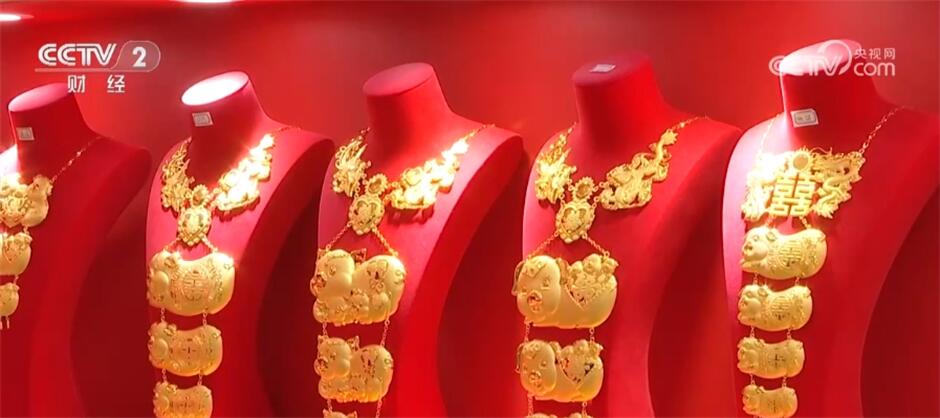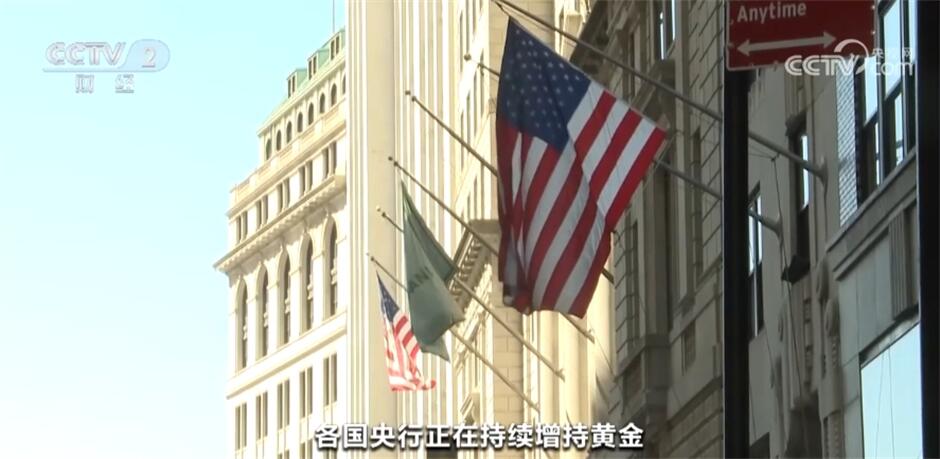Wisdom Morning Post: Huawei released Mate10 5400 yuan for sale; Daimler will reorganize and split the car and truck business on a large scale.

"Wisdom Things" Evening News No.767
Tuesday, October 17th, 2017
# Today’s news #
1. Huawei released the AI flagship mobile phone Mate10 5400 yuan for sale.
On October 16th, it was reported that Huawei held a new launch conference of Mate10 series mobile phones in Munich, Germany, and released Huawei Mate 10, Huawei Mate 10 Pro and Huawei Mate 10 Porsche version. Huawei Mate 10 series and Mate 10 Pro are both equipped with AI chip "Kirin 970", adopting EMUI 8.0 system, and at the same time using 2K display screen, which increases the battery capacity by up to 40% compared with the previous generation. Mate 10 costs 699 euros (about 5400 RMB, 4GB+64GB), Mate 10 Pro costs 799 euros (about 6200 RMB, 6GB+128GB) and Porsche customized Mate 10 costs 1395 euros. All three mobile phones will be officially launched in early November.
Mate 10 series uses a 5.9-inch RGBW HDR panel with a ratio of 16:9, with a resolution of 2560×1440, and the front entity Home key supports fingerprint recognition. Mate 10 Pro adopts full-screen design: 6-inch OLED HDR panel with 18:9 ratio, resolution of 2160×1080, and rear fingerprint.
2. Daimler will reorganize and split the car and truck business on a large scale.
On October 16th, Bloomberg reported that Daimler announced that it had broken the group structure, making Mercedes-Benz automobile department and truck production business independent legal entities, and planned to transform into holding companies of three subsidiaries, namely Mercedes-Benz automobile and van, Daimler truck and bus business and financial services department, which are already independent legal entities. Shareholders may vote as early as 2019.
3. LeTV’s second CEO Zhang Hailiang has been hit hard or has left.
On October 16th, a source said today that Zhang Hailiang, the vice chairman and CEO of LeTV, had left LeTV and joined Beijing Dianka Automobile as the chairman and CEO. Che Dongxi contacted the insiders of LeTV, and the other party confirmed the matter, but the specific details have not been officially announced. It is worth mentioning that Jia Yueting, who is still the chairman of LeTV, has not expressed his position yet.
Like Ding Lei, who left LeTV earlier, Zhang Hailiang was once an important executive of SAIC. Ding Lei used to be the vice president of SAIC and the general manager of Shanghai GM, while Zhang Hailiang used to be the general manager of Shanghai Volkswagen, also the vice president of SAIC. Today, the first-line executives of two traditional car companies have left LeTV.
# Artificial Intelligence #
1. The first shot of Dharma Institute: Microsoft Google experts join AI Lab.
On October 16th, recently, Ali announced the establishment of the Dharma Institute, an entity that carries the "NASA Plan", aiming at conducting research on basic science and subversive technological innovation. Ma Yun said that in the next three years, more than 100 billion yuan will be invested in Dharma Institute.
The Dharma Institute has just been established, but it is progressing rapidly. Dr. Nie Zaiqing, Principal Investigator of Microsoft Research Asia, and Dr. Li Mingyang, Technical Director of Google Tango and DayDream Project, joined Ali AI Labs. Among them, Nie Zaiqing will be the general manager of AI Labs Beijing R&D Center, and Li Mingyang will be the outstanding scientist of AI Labs machine vision. According to reports, Dr. Nie Zaiqing previously worked for Microsoft Research Asia as the chief researcher, mainly responsible for the research and development of Microsoft’s natural language understanding and entity mining, and related technologies have been applied to Bing, Office, Cortana and other products. After joining AI Labs, he will not only be responsible for the R&D work of Beijing R&D Center, but also focus on breaking through the two research directions of knowledge map and natural language understanding.
Dr. Li Mingyang’s main research fields are vision-inertial navigation odometer (VIO) and instant positioning and map reconstruction (SLAM). Previously, he worked for Google as the technical director of Dream/Tango project, studying multi-sensor fusion and SLAM, including theoretical innovation and commercialization of technology.
2. Former Amazon scientist Bo Liefeng joined JD.COM AI Lab.
On October 16th, Dr. Bo Lefeng, the former chief scientist of Amazon, joined JD Finance as the chief scientist of JD Finance AI Lab. According to JD Finance, the research and development fields of JD Finance AI Lab cover image recognition, speech recognition, human-computer dialogue and other fields. In the future, JD Finance will adopt similar technology development strategies like giants such as Ali and Tencent, and carry out long-term cooperation with research institutions of top universities in the United States, and strive to develop the most cutting-edge technologies in the field of artificial intelligence.
It is reported that Bo Liefeng received his Ph.D. from xidian university in 2007, and has been engaged in postdoctoral research in Toyota Research Institute of Chicago University and Washington University. The research content involves machine learning, deep learning, computer vision, robotics, natural language processing and many other fields.
3. EasyGo, an unmanned store, won tens of millions of strategic investments from Times Real Estate.
According to media reports, EasyGo, a new retail unattended convenience store project, announced that it has obtained tens of millions of strategic investments from Times Real Estate. It is reported that this financing will be mainly used to build a data background, improve technology, and quickly expand stores. EasyGo was established in 2017 with a seed round financing of 5 million yuan; Angel Round raised 20 million yuan, which was invested by Zhejiang Yikun Venture Capital and Shenzhen Yongtian.
Wang Mumu, co-founder of EasyGo, said that in cooperation with real estate developers, it is hoped that EasyGo convenience stores will become part of the supporting services provided by real estate developers and property management companies to owners in the future. It is said that the number of stores of EasyGo in Guangzhou will increase to 100 by the end of the year. In addition to being stationed in major cities in Shenzhen and the Pearl River Delta, it will carry out high-density layout in five key regions of the country next year.
4. After Wal-Mart, Google Target cooperated with voice shopping project.
According to media reports, Target, a well-known American department store, has been cooperating with Google for many years, but the scope of cooperation is limited to a few cities in the United States. Recently, Target and Google announced that they will expand this cooperation to the national market, and soon Target will become a retail partner of Google’s voice shopping project, so that Target users can also shop through voice commands.
In addition to Target, at the end of August this year, Wal-Mart also announced that it had joined hands with Google to officially enter the voice shopping market, and joined Google Express, Google’s online shopping platform, in September.
# New trip #
1. Pony.ai’s China headquarters settled in Guangzhou, and the unmanned motorcade was pushed years ago.
On October 16 th, the auto-driving startup Pony.ai (Chinese name Xiaoma Zhixing) signed a contract with the Guangzhou Nansha Development Zone Management Committee to set up an unmanned R&D center and headquarters base in Nansha, and plans to launch an unmanned fleet before the end of the year.
Pony.ai was founded by Peng Jun and Lou Tiancheng, who used to work for Baidu’s unmanned vehicle team, aiming at high-level autonomous driving (above L3). When they were in Baidu, their ranks were T11 and T10 respectively. Pony.ai first developed in Silicon Valley, and then set up its domestic headquarters in Beijing. With this signing, Pony.ai promised to move its national headquarters to Nansha, Guangzhou, and set up an unmanned research center and experience center. Nansha District will provide support in terms of talents, venues and funds. When signing the contract, Nansha specifically mentioned that it would "plan and build an exclusive area to provide road test experiments for the scenes needed for autonomous driving."
2. Toyota’s fuel cell truck tested in the United States has a battery life of over 200 miles.
According to the American automobile magazine, Toyota tried to extend the fuel cell technology to heavy trucks after launching Mirai hydrogen fuel cell car, and put Project Portal fuel cell trucks into the warehouses of Los Angeles and Long Beach ports to transport goods. At present, the Toyota Class 8 concept truck has completed more than 4,000 miles of cargo mileage. From October 23, the truck will travel nearly 200 miles every day. With the continuous development of feasibility study, Toyota will increase the transportation mileage of fuel cell trucks.
It is said that the Project Portal truck is equipped with a 12 kWh small battery and a fuel cell stack in Mirai, with a power of 670 HP, a peak torque of 1,325 lb-ft and a cruising range of more than 200 miles. Toyota expects its load capacity to be 80 thousand pounds. More importantly, its emissions are only water.
3. Tesla supports the free upgrade of the old car with the new national standard charging interface.
On October 16th, Tesla announced that it will launch Model S and Model X models that meet the "new national standard" (GB/T20234-2015) charging interface to the China market. In the future, Tesla will cancel the charging port originally hidden in the corner of the left taillight and add a new national standard charging interface at the left rear fender.
Tesla also announced that starting from today, it will provide free "New GB" charging adapters for vehicles equipped with non-"New GB" charging interfaces in China. In order to cooperate with the above measures, Tesla will also transform the super charging piles in mainland China and the charging piles in the destination charging network to support the new national standard charging interface. At present, Tesla has set up more than 700 super charging piles in China market, and its charging and service network has covered 170 cities across the country. It is estimated that the number of charging piles will reach 1,000 by the end of the year.
4. Momenta, a Beijing autonomous driving company, completed the B2 round of financing.
On October 16th, Beijing autonomous driving company Momenta completed the B2 round of financing, which was led by Caive Sino-French Innovation Fund, and GGV ggv capital participated. This round of financing will help Momenta to further consolidate and expand in AI talent formation, accelerate product landing and research and development of L4 driverless technology that just needs high-frequency scenes. Previously, Momenta received $46 million in financing, which was led by Weilai.
Momenta was established in 2016. The founding team consists of AI talents from Tsinghua University, Microsoft Research Asia, Shangtang Technology, etc. Its core technologies include environmental awareness based on deep learning, high-precision maps and path planning algorithms, and it can also provide customers with L3-L4 high-stage autopilot solutions and derived big data services and products. Including real-time lane line/curb detection, drivable area detection, 3D vehicle detection, human feature point detection and other SDKs, it can not only detect contours, but also identify key feature points, so as to better understand and predict the motion trajectory of human body/object.
5. Guangdong’s subsidy policy for new energy vehicles: 50% of the national subsidy will be implemented.
According to media reports, Guangdong Province issued the "Provincial Financial Subsidy Policy for the Promotion and Application of New Energy Vehicles (Draft for Comment)", which stipulates that consumers (including units and individuals) who purchase new energy vehicles in Guangdong (excluding Shenzhen) and register and declare at the place of registration will be given comprehensive subsidies for new energy vehicles, and the distribution enterprises will apply for comprehensive subsidies for local vehicles. Vehicles registered since January 1, 2017 are 50% of the state subsidy; The local subsidy for fuel cell vehicles is not less than 4,500 yuan /kW (calculated according to the rated power of vehicle fuel cells), and the local subsidy does not exceed the national subsidy.
6. JD.COM and Sinopec work together to build 30,000 smart gas stations.
On October 16th, according to media reports, China Petrochemical, which has more than 30,000 gas stations and 25,000 convenience stores, has reached a strategic cooperation agreement with retailer JD.COM to upgrade its offline outlets by using the smart store technology and smart supply chain in JD.COM.
China Petrochemical’s retail network will introduce a variety of e-commerce modules such as commodities, supply chain, transaction, logistics, membership and marketing from JD.COM, and upgrade its retail network to an online and offline integrated platform of intelligent supply, intelligent operation and intelligent consumption. Offline gas stations and convenience stores can rely on JD.COM Group’s intelligent computing capabilities in big data, forecasting algorithms, logistics algorithms, cloud computing, machine learning, and introduce smart supply chain technologies such as sales forecasting, intelligent product selection, warehouse layout, and intelligent replenishment to improve the operation and management level and efficiency of gas stations and convenience stores.
7. Sun Zhengyi’s $10 billion stake in Uber requires the old shareholders to transfer at a discount.
According to media reports, Masayoshi Son is actively seeking to buy Uber shares in order to make up for the regret that he failed to take a stake in Uber earlier that year. Previously, due to the big price difference between the two parties, the transaction has been difficult to advance. According to the latest news, Sun Zhengyi will agree to buy two different types of Uber shares at a total price of 10 billion US dollars: one is the stock sold by existing investors, the so-called "tender offer", and the other is the new stock issued by Uber. For the first stock, the Uber valuation given by Sun Zhengyi is about $50 billion. As for the part of the new stock, he is willing to calculate the price with the current valuation of the company of $68 billion.
8. It is difficult for GOFUN to refund the deposit for the shared car, but it has not arrived after two months.
On October 16 th, according to media reports, GOFUN shared car users reported that they applied for a refund of the deposit in mid-August, but it has not arrived two months later. It is reported that the deposit of GOFUN’s shared car is 699 yuan, and the company promises that customers will receive the deposit within 5-7 working days after applying for refund. GOFUN customer service said that the user paid the deposit through Alipay, and there was a problem during the refund process. The user needed to send an email to apply for a refund, including the registered mobile phone number, Alipay account number, bank account number and other information. Subsequently, the user sent an email as required, but the deposit has not yet arrived.
9. TELD cooperates with Didi to explore the electric network car market.
According to media reports, Qingdao TELD New Energy Co., Ltd. and Didi signed the Strategic Cooperation Agreement, aiming to give full play to the advantages of resource integration and technology platform of both parties and jointly promote new energy, sharing and intelligence in transportation. In this cooperation, TELD will integrate the advantages of its nationwide charging network and charging technology to provide safe, economical and fast charging services for Didi drivers, so as to promote the popularization and application of new energy vehicles and the construction of supporting charging technology facilities. Although the specific project has not been determined, it has created an opportunity for TELD to improve the charging business layout of the network car in the automobile charging network industry chain and expand the electric network car market.
10. The shared parking space Xiaomazhi stopped the Angel Wheel to raise 2 million yuan.
On October 16 th, Xiaoma Zhiting, a start-up company sharing parking spaces, announced that it had received 2 million yuan of angel round financing in July this year. It is reported that Xiaoma Zhiting was established in June 2017. It is an intelligent parking company of the Internet of Things, providing users with services such as unattended, automatic charging, automatic parking, reserved parking spaces, shared parking and reverse car search. By integrating parking lot information, users are informed of the stock and location of parking spaces, which is convenient for users to park quickly.
Xiaomazhi stops using a parking lock based on NBIOT technology to "share the parking space". When users spend 960 yuan to buy the lock, they can rent out their own parking space and get additional benefits. NBIOT is a wide-area narrowband Internet technology, and the hardware can be directly connected to the network without intermediate transmission tools such as WIFI and Bluetooth.
11. The LimeBike B round of financing in bike-sharing, USA is 50 million US dollars.
On October 16th, according to media reports, LimeBike, a pile-free bike-sharing company in the United States, announced that it had completed the $50 million Series B financing, which was led by the hedge fund Coatue Management and participated by GGV ggv capital, Franklin Templeton Investments, Section 32, etc. This round of financing will be used for operational expansion, and the number of existing bicycles will be tenfold by the end of 2017, and it is planned to open up 1-2 markets every week and start outside the United States. It is reported that up to now, LimeBike has raised a total of 62 million US dollars.
LimeBike has nearly 300,000 registered users since it went public in June this year. It is estimated that 50,000-70,000 bike-sharing vehicles will be launched in the United States before the end of this year, targeting more than 30 cities and campuses in the United States, and plans to land in the European market.
12. Japan has formulated a network security guide to prevent hackers from hijacking unmanned vehicles.
According to media reports, the Japanese government is formulating a set of guidelines, including the simulation results of cyber attacks on self-driving vehicles, aiming at realizing the interconnection of self-driving vehicles without being hijacked by hackers. Some media said that its guideline is likely to be to establish a mechanism and corresponding functions to defend against cyber attacks, and force vehicles to park on the side of the road when the system detects hacker attacks.
The guidelines include the simulation results of cyber attacks on self-driving vehicles. For this, Deloitte Japan Risk Service, Nihon Synopsys and PricewaterhouseCoopers Consulting will start the proof-of-concept test of the defense system next summer, and first establish a process to evaluate the vehicle’s resistance to hackers. The evaluation system will be used in research facilities to check the risk of self-driving vehicles being vulnerable to cyber attacks.
13. CarHopperr, the luxury car rental platform, has a seed wheel of 1.5 million yuan.
According to media reports, CarHopper, a luxury car rental platform, completed a $1.5 million seed round financing, which will be used to expand new markets. CarHopper initially built a P2P platform for luxury car owners to rent luxury cars, including entry-level Lexus, Mercedes, BMW, luxury Ferrari and Rolls-Royce, and provided insurance, customer service and car maintenance services.
CarHopper’s car costs as little as $600 a day and as much as $1,500 a day. At present, the company covers cities including Los Angeles, San Francisco, Miami and Las Vegas, and will enter new york, Hampton and Orlando in the future.
14. AKASOL pushes the battery system of electric bus to support 500kW fast charging.
According to foreign media reports, AKASOL will launch AKASYSTEM OEM battery system at the European World Bus Expo at the end of this month. The system will be installed on the roof of the bus, including condensation devices and other components. AKASYSTEM OEM system adopts compact and modular design, and its size is 150 x 700 x 1700mm, which is specially designed for commercial vehicles such as buses or trucks.
The system adopts water cooling/glycol refrigeration system, which improves energy efficiency and durability. In daily use, it can optimize the thermal environment conditions of public transport vehicles. In addition, this lithium battery system also uses 500 kW fast charging technology. Under the nominal voltage of 661V, the standard version of AKASYSTEM OEM system has a power consumption of 24.4 kWh and an output value of 150 kW, and multiple AKASYSTEM OEM devices can be connected in parallel to increase the power consumption.
15. Mazda rotor technology was mass-produced for electric vehicles in 2019.
According to media reports, electric vehicles equipped with Mazda’s new rotor engine technology were first listed in the United States in 2019. Mitsuo Hitomi, executive director of Mazda Automobile Co., Ltd., said that rotor engine technology will be used as a range extender for electric vehicles to increase the cruising range of vehicles. Mazda’s RX7 and RX8 are classic sports cars equipped with Rotary Engine, but they have already targeted the upcoming electric vehicles.
16. The modified fuel vehicle is a hybrid vehicle company, D Wheel, with a financing of 22 million US dollars.
According to media reports, XL Hybrids announced that it has completed the $22 million Series D financing, which was invested by companies such as IKEA Group and Constellation Technology Ventures, a venture capital institution owned by American energy giant Exelon. Previously, XL Hybrids had received $28 million in financing for research and development and sales in North America.
It is reported that XL Hybrids was established in 2008, focusing on converting gasoline or diesel-driven vehicles into hybrid vehicles, mainly for corporate fleets, including vans, attendance buses, dump trucks and pickup trucks. The modification of these vehicles only takes 6 hours. Can be completed.
17. In 2040, the number of electric vehicles in the world will reach 500 million, and 500 million charging units need to be built.
On October 16th, according to relevant report data, there will be 500 million electric vehicles in the world in 2040, and about 526 million charging units need to be built. By 2040, China’s investment in electric vehicle infrastructure will account for about one third of the global total investment.
Earlier, Morgan Stanley analysts said that the market share of Tesla electric vehicles will reach 10 times that of the end of 2017 by the beginning of 2023, but the lack of infrastructure will become the biggest bottleneck for Tesla’s rapid development.
# Communication circle #
1. Follow closely Apple Huawei and French Start-up Cooperation Research Face ID
According to French media L’usine Novelle, at the supplier conference in Paris, Huawei announced the signing of cooperation agreements with Chronocam, Secure-ID and Siradel. Huawei and Chronocam will work together on Face ID technology similar to iPhone X.. In order to improve the security of Kirin chipset, we will cooperate with Secure-IC, the telecom branch of Paris Telecom University, and we will cooperate with Siradel, a 3D geospatial software company, in the project of 3D map drawing. In the past four years, Huawei’s purchases from suppliers in France have doubled.
It is reported that the company Chronocam was founded in 2014 and headquartered in Paris. It is committed to developing new visual sensors and systems. Its sensor technology is inspired by biological eyes and can efficiently acquire and process visual information. The B round of financing is 15 million US dollars, led by Intel Capital.
2. Samsung may change its management structure and appoint an external director as its chairman.
According to media reports, with the resignation of kwon oh-hyun, vice president of Samsung Electronics, Samsung’s management structure will also be changed accordingly, which is likely to give the board of directors more power and select an American from outside directors as the chairman of the board. In March last year, Samsung amended its articles of association to allow the appointment of external directors as the chairman of the board of directors.
Last week, Samsung announced that kwon oh-hyun, CEO and vice chairman of the company, decided to quit management. To ensure a smooth transition, kwon oh-hyun will wait until the end of his term in March 2018.
3. IDC: Huawei first surpassed Apple to become the second largest mobile phone manufacturer this year.
On October 16th, Francisco Jeronimo, an analyst with IDC, a research organization, said that Huawei will surpass Apple and become the second largest smartphone manufacturer in the world as soon as this year.
According to data released by IDC, in the second quarter of this year, Huawei shipped 38.5 million smartphones worldwide, with a market share of 11.3%. Apple’s iPhone shipped 41 million units, with a market share of 12%. The smartphone sales of the two companies are only about 2.5 million.
4. One plus admitted to collecting user data and said that it would stop collecting at the end of October.
According to media reports, one plus oxygen OS collects private data without the user’s knowledge. In response, a statement issued a few days ago acknowledged this behavior, explained the reasons, and promised to stop collecting before the end of October.
The incident originated from an article published by Chris Moore, a foreign blogger in the field of science and technology security, which claimed that one plus one mobile phone 2 collected users’ privacy without users’ permission. It is said that after Chris Moore deployed security tools on the one plus mobile phone 2, he found a traffic request from open.oneplus.net, which would lead data traffic to the AWS server of Amazon in the United States. The transmitted data included IMEI serial code, MAC address, mobile network name, WiFi SSID and mobile phone serial number.
5. Foreign researchers invented a new suspended antenna to improve the speed of 5G.
According to media reports, foreign researchers have invented a "floating" antenna to speed up the 5G network. It is reported that researchers have developed a millimeter wave array, which can be almost completely separated from the motherboard of mobile devices, avoiding the problem that the signal strength is easily weakened by the motherboard in traditional antenna design. In addition, researchers also use 3D printing technology to improve the focusing ability of the antenna, thus further enhancing the signal strength. At present, this technology is still in the early stage of research and development, so it will take some time before it is released or commercialized.
6. Android Push Alliance is established to receive information without frequent wake-up.
According to media reports, the Android Unified Push Alliance was officially announced in Beijing. The alliance is led by Tell Lab of the Ministry of Industry and Information Technology, and its members include 74 enterprises including Huawei, Xiaomi, OPPO, vivo, Gionee, Meizu, Nubia, Lenovo, Qihoo 360, Baidu, Ali, Tencent, JD.COM, Meituan, Google and Samsung. The establishment of the Android unified push alliance means that the chaotic state of the domestic Android ecosystem will end. In the future, Android applications will not need to wake up frequently to receive messages, which will not only save the running memory of Android phones, but also save power and traffic for Android phones.
# Big company #
1. The new headquarters in JD.COM accommodates 50,000 people and consists of four groups and ten buildings.
According to media reports, Liu Qiangdong exposed the design of the new JD.COM headquarters building park on a media platform, which consists of four groups of ten buildings, accommodating more than 50,000 people, including 40,000 R&D personnel, and is headquartered in Yizhuang, Beijing.
# Robots/drones #
1. The service robot Cruzr is expected to have an annual output of 30,000 units when it goes offline in Kunming.

On October 16th, according to media reports, Cruzr, an intelligent cloud platform commercial service robot produced by Ubisoft in Kunming, was officially launched, with an estimated annual output of 30,000 units. Cruzr robot can realize accurate face recognition, three-dimensional navigation to avoid obstacles, real-time monitoring, interesting and anthropomorphic interaction and other functions, can undertake the work of welcoming guests and interpreters, and can also provide video customer service, security monitoring, interactive entertainment and other services for airports, shopping malls, banks and other public places.
In addition, the Kunming Municipal Government will also support Ubisoft to build a national demonstration base for robot maker education in Kunming, and will set up robot electric classrooms in 120 primary and secondary schools in the city to carry out robot education.
2. Yamaha pushes the new version of robot motorcyclists to drive alone.

According to media reports, YAMAHA Yamaha, a Japanese motorcycle manufacturer, has released the latest version of Motobot Ver.2, a humanoid robot that operates motorcycles, and will be exhibited at the 45th Tokyo Motor Show.
Motobot was unveiled at Moto Show in 2015. The evolved version of Ver.2 motorcycle body does not need to be modified, so the robot can jump on the car directly and operate the motorcycle like a real person. According to the motorcycle speed, engine running speed, riding posture and other information, the robot can manipulate the direction, accelerate, brake and other operations, and can drive at a speed of 200 kilometers per hour on the actual track.
3. The University of California developed the robot "soft grip" to twist the light bulb.
According to media reports, researchers at the University of California, San Diego (UCSD) recently invented a new type of soft robot, which can not only easily twist a light bulb, a bottle cap and a screwdriver, but also hold a piece of paper.
According to the researchers, this soft robot gripper uses tactile sensing technology to model the object it touches. By repeatedly touching and rotating the object, the robot gripper can draw a point cloud image of the object (a point cloud is a collection of point data on the appearance surface of the product), thus sensing the object being manipulated. The robot gripper has three soft "fingers", and each "finger" consists of three pneumatic flexible drivers, which can be moved by applying air pressure. Each "finger" is covered with a layer of intelligent "skin" made of silicone rubber, in which a sensor made of conductive carbon nanotubes is embedded. The conductivity of carbon nanotubes will change with the bending degree of fingers. The "skin" can sense the information of the object held by the gripper, and then record and detect when the "finger" moves and contacts with the object.
4. Tangdi Information invested 39 million yuan in the robot subsidiary.
On October 16th, Tangdi Information announced that it planned to increase the registered capital of its subsidiary Shanghai Tangbao Robot Co., Ltd. to 40 million yuan, that is, the newly-increased registered capital of Shanghai Tangbao Robot Co., Ltd. was 39 million yuan, of which the company subscribed for 39 million yuan. This foreign investment does not constitute a connected transaction. According to Tangdi Information, the company’s foreign investment is to expand its business scale, expand its business and optimize its production capacity layout.
# New progress #
1. The US court accepted Jia Yueting’s lawsuit against Gu Yingqiong for libel and rumor.
On October 16th, LeTV Holdings issued the Statement that the case of Jia Yueting, the chairman of the company, v. Gu Yingqiong was formally accepted by the American court, saying that the Los Angeles court in the United States formally accepted the legal lawsuit filed by Jia Yueting against Gu Yingqiong on October 6th. It is reported that LeTV sued Gu Yingqiong on September 29th, demanding that Gu Yingqiong bear general, specific and punitive damages, and forbade him to continue to harass, slander and spread rumors about Mr. Jia Yueting.
On August 24th, the micro-signal "Dr. Gu Yingqiong said the world" published an article "Two things Jia Yueting is doing in the United States", saying that "Jia Accountant" is applying for "EB1C" green card and "irrevocable living trust" in the United States.
2. Haida shares signed a contract with Tesla to purchase solar roofs.
On October 16th, Haida announced that it signed a procurement contract for solar roof seals with Tesla, which is an open contract, and the amount is subject to the final actual settlement. The announcement said that the acquisition of this business is the beginning of the business between Haida and Tesla, which lays the foundation for cooperation with other business sectors of Tesla and also has a positive impact on the expansion of other solar energy businesses.
3. SpaceX applied to test the satellite communication system in Seattle.
On October 16th, SpaceX submitted an application to the Federal Communications Commission (FCC), and plans to test the satellite communication system between Raymond factories in Seattle, Washington as early as this month. Raymond is one of SpaceX’s operating bases. The company has invested billions of dollars to build 4,425 satellite groups, most of which are low-orbit satellites. It is reported that the satellite communication system will be mainly used for global broadband Internet connection. SpaceX’s recent documents show that the company is about to deploy the first batch of prototype satellites.
4. Musk revealed the details of emigrating to Mars: only transporting without building a city.
On October 16 th, according to foreign media reports, SpaceX CEO Musk recently said that in terms of colonizing Mars, SpaceX’s important goal is to send humans to Mars, and to ensure survival on Mars, many industries need to be established on Mars, which requires other companies and millions of people to complete. In other words, SpaceX focuses only on the role of a carrier, and the larger goals such as building a city on Mars are completed by other companies.
5. Sony released a monitoring sensor that can shoot 4K/120fps video.
On October 16th, according to media reports, Sony released a new M4/3 BSI CMOS sensor "IMX294CJK", which is mainly for the monitoring field, and it is also Sony’s first M4/3 monitoring sensor. It is reported that the sensor has 10.71 million effective pixels, and supports 4K resolution of 10-bit color depth and video capture at 120fps. The specific output video resolutions support 3704×2778(4:3), 3840×2160(16:9) and 4096×2160(17:9), except for the color depth of 10-bit. In addition, the new sensor also has higher high-sensitivity performance (SNR1s=0.14x) and high-speed interface (CSI-2/SLVS-EC). By adopting Sony’s brand-new quadruple Bayer structure, it can support real-time HDR video, but the frame rate in HDR mode is up to 60fps.
6. Bain Capital plans to invest $9 billion in Toshiba Storage Company.
According to media reports, Bain Capital Consortium will invest 9 billion dollars in Toshiba Storage Company to promote business growth. It is reported that Bain and Apple, South Korea’s SK Hynix, Seagate, Dell and other companies spent $18 billion to acquire Toshiba Storage Company. Bain said that after the completion of the acquisition, Bain will not carry out a major structural reorganization of Toshiba Storage Company, but will provide more support to gain business growth, and within three years, Toshiba Storage will be listed independently on the Tokyo Stock Exchange.
#A shares must see #
1. Letv announced that it would continue to suspend trading for six months.
On October 16 th, LeTV announced the progress announcement during the suspension of major asset restructuring, and continued to suspend trading since the market opened on October 17. Letv suspended trading for six months from April 17th.
The target company of this major asset restructuring of LeTV is LeTV Pictures, and in May 2016, LeTV disclosed the acquisition plan for the acquisition of LeTV Pictures. According to the plan, LeTV plans to acquire 100% equity of LeTV Pictures from 44 shareholders including LeTV Holdings with a total transaction amount of no more than 9.8 billion yuan. Then, in November, LeTV.com said that due to the great changes in the market environment, it may have a great impact on the performance commitment and the basis of valuation. It is expected that this major asset restructuring will not be completed in 2016.
2. Jebsen expects net profit to increase by 23% to 28% in the first three quarters.
On October 16th, Jebsen announced its performance forecast. The company predicted that the net profit attributable to shareholders of listed companies from January to September 2017 would be 753 million to 785 million, a year-on-year change of 23.00% to 28.00%, and the average net profit growth rate of the computer application industry was 13.45%.
Hot spots, new products, recruitment, resources and activities, the most effective industry docking
Demand docking: WeChat adds "hawkren001"





























